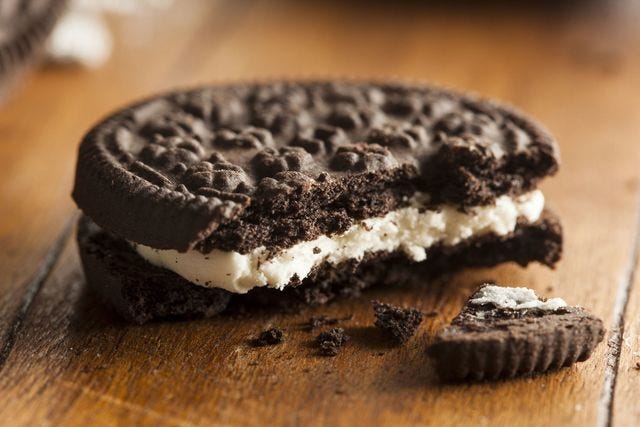How One Researcher's Experiment with Oreos Shows that LDL Has Many Important Functions Including Energy Transportation
If your LDL is high, take a deep breath before reaching for the statin poison. Then put on your thinking cap and stick with me while we examine some funky, unexptected science.
The “Oreo Lowers Cholesterol” headlines are taking the Internet by storm, and I’m losing count of the number of people who’ve sent variations of the headlines to me (thank you, BTW). Here’s the 7-minute YouTube from the researcher Dr. Nick Norwitz explaining his findings, and here’s a link to his published paper.
As is often true with quick-takes and headlines, many people completely misunderstand the study to be saying that Oreos are healthier than previously thought and should be used to lower LDL cholesterol, which is presumed to be a good thing.
However, the study means nothing of the sort. So you’re going to need to follow me closely here because it’s a FASCINATING study when you understand what the researcher set out to prove. Some background is key.
First, how Dr. Nick Norwitz conducted his experiment:
Norwitz went on a strict ketogenic diet (eating less than 20 grams of carbs/day). This caused his LDL to skyrocket to 384 mg/dL which is considered nearly 4 times higher than ideal since an LDL over 100 is considered high by the medical establishment.
Norwitz then began eating 12 Oreo cookies a day, adding 100 grams of carbs to his diet. In just 16 days, the addition of Oreos caused his LDL cholesterol to plummet to 111 mg/dL (71% reduction).
Norwitz returned to the keto diet for 3 months, and his LDL climbed up to 421.
Lastly, he took 20 mg of rosuvastatin, and his LDL dropped to only 284—not nearly as dramatic as the “Oreo cookie intervention.”
Why he did it: First, he did not set out to prove that Oreos should be used to lower cholesterol! Nick doesn’t believe that high LDL is bad.
Instead, Norwitz set out to prove that when many people go on the keto diet, the body dramatically raises its level of LDL as a way to transport fat for energy. He calls this the lipid energy model.
He posited that if the true purpose of his body creating high LDL was simply for transporting fat for energy, then adding carbs would dramatically reduce his LDL in mere days as glucose immediately becomes the fuel source instead of fat.
This is exactly what happened to Norwitz. It worked because, with the Oreos for fuel, Norwitz’s body no longer needed to ferry as much fat around in LDL “submarines” to use for fuel. He could have achieved the same result with any carb.
Here are two things to keep in mind as we unpack this study:
This study has absolutely nothing to do with the relative health of Oreo cookies. They happen to be every bit as detrimental to health as every other ultra-processed, soybean oil-filled, high fructose corn syrup-saturated, shelf-life-of-37-years fake food product available.
The main point the study set out to prove was that high LDL cholesterol is not a universal sign of poor heart health and that lowering LDL, whether through statins or the highly effective Oreo cookie therapy, is not necessarily a good thing despite medical establishment dogma.
The Burning Question: Is Ketogenic Therapy Dangerous Since It Raises LDL?
Keep reading with a 7-day free trial
Subscribe to Fast Well | Feast Well to keep reading this post and get 7 days of free access to the full post archives.




